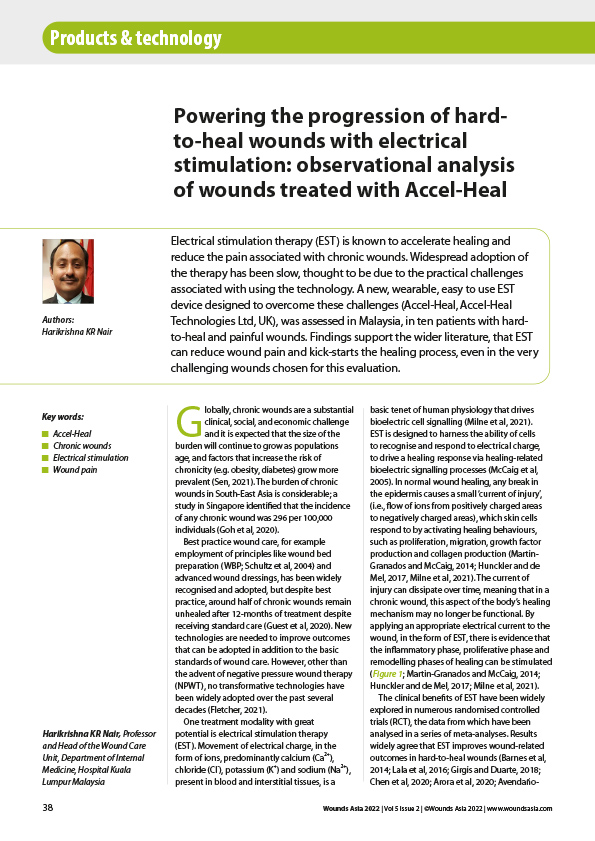Chronic wounds impact heavily on the patient’s quality of life, as well as on the national economy. Biofilm found in chronic wounds can inhibit healing, this makes debridement necessary to disrupt and remove the biolfim to restart the healing process. A topical dehydrating agent A (TDA A) has been developed as a new form of wound debridement. Methodology: After basic wound cleansing, TDA A was applied to the wound bed using gloved finger and left on for 60 seconds. The wound bed was rinsed thoroughly and remaining detachable material were rubbed off. The wound bed was dried and dressed according to the standard of care. Results: We recruited six patients of different aetiologies, including diabetic foot ulcers (n=4), a carbuncle (n=1) and wound dehiscence (n=1). There were three female and three male patients with a median age of 69 years. The area of the lesions ranged from 30 to 72cm2 with a median age of 10.5 weeks. The time taken to reach the end-point of the study which was granulation ranged from 2 to 5 weeks. The adverse effect observed with this study is pain, experienced by patient on a range of 2 to 5, according to visual analog scale (VAS) during treatment. The pain resolved within 60 minutes at most and no lasting pain after the treatment was recorded. Conclusion: TDA A successfully debrided chronic wounds of different aetiologies and has the potential to serve as an alternative to current available debridement methods.






